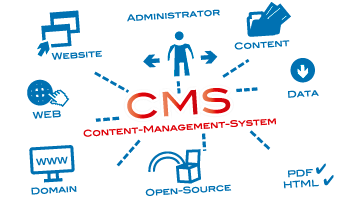
- Dynamic websites change according to user requirements
- Dynamic content has two flavors: the server side and client side
- Server side implies sending forms or reloading pages
- The client side doesn’t need to send forms or reload pages
- We use PHP and Ruby on Rails for the processing side in the server
- For the client side we use JavaScript and Flash
- AJAX is a combination of server side and client side
When an internet document responds in the same way without care about the context or parameters sent by the user, for example in a simple HTML page, it is known as a static page. Those types of pages are not useful for complex sites. On the other hand are the dynamic pages, our company’s specialty.
 Using Server Side Dynamic Pages
Using Server Side Dynamic Pages
Suppose you upload your catalog of products to a website; then that catalog is stored in a DataBase. Every time you upload a new product you have to fill a form with the product data, but you don’t have to create a new page to show the product. When your clients select the product from a menu, a page with the graphic design of your site and the product information appears. This is only a file answering to the client’s click, but changing according to the product that clients choose. Due to the content change depending on the click on a link that makes the page load or reload you can get to know this process on the server-side.
 Using Client Side Dynamic Pages
Using Client Side Dynamic Pages
When you see a little emerging dialog box with a warning or message of confirmation, or when a page hides and shows menus or any other content without having to wait for the page reload, the client's side is working. That means the major of times that your browser is making the process, that could be parsing some JavaScript code or a using plugging like flash media player for example.
 AJAX
AJAX
Using javascript to call the server side scripts and use results to make the page change without reloading it is called AJAX (Asynchronous JavaScript and XML). This is one of the most popular technologies today, used by Google, MSN, Yahoo, and a lot of other big websites on the internet. We also know how to implement AJAX on your website.
 Why Don’t Use Extensive Flash
Why Don’t Use Extensive Flash
Flash animations are pretty but they are not friendly with the Search Engines (Google, Yahoo, MSN, etc.); that is because the text used in an animation is codified in a flash movie, and search engines don’t read movies, only text. If you want to animate your menus or any other part of your site and they contain relevant keywords is better to choose DHTML (Dynamic HTML that works updating HTML with JavaScript programming), because in that way the text is still Search Engines friendly.
Check our SEO blog for more info about splash pages
